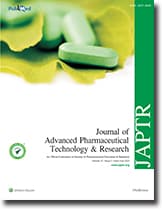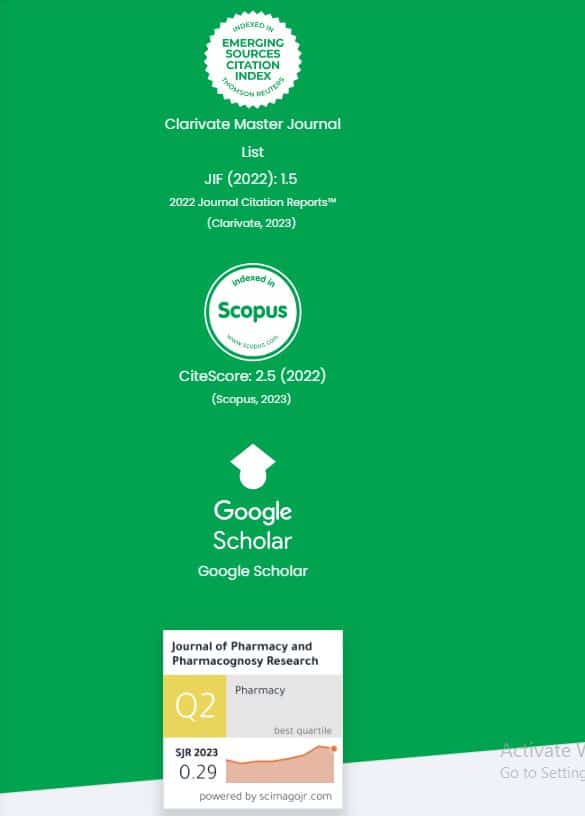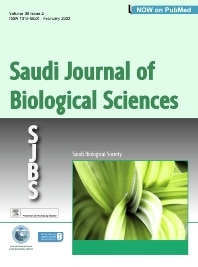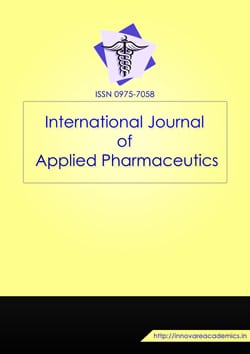
Anti-aging potential and phytochemicals of Centella asiatica, Nelumbo nucifera, and Hibiscus sabdariffa extracts (2020)
Title : Anti-aging potential and phytochemicals of Centella asiatica, Nelumbo nucifera, and Hibiscus sabdariffa extracts
Researcher : Monsicha Khuanekkaphan1, Chanai Noysang2, Warachate Khobjai3
Department : 1 Department of Health and Aesthetics, Thai Traditional Medicine College, Rajamangala University of Technology Thanyaburi, Pathum Thani, Thailand
2 Department of Innovation of Health Products, Thai Traditional Medicine College, Rajamangala University of Technology Thanyaburi, Pathum Thani, Thailand
3 Department of Applied Thai Traditional Medicine, Thai Traditional Medicine College, Rajamangala University of Technology Thanyaburi, Pathum Thani, Thailand
Abstract : Centella asiatica, Nelumbo nucifera Gaertn, and Hibiscus sabdariffa have been used as medicinal plants in Thailand. They are sources of phytochemicals that applications for esthetic and healthcare. The aim of this research was to examine the phytochemical constituents and anti-aging potential of these plants. The phytochemical compounds were performed using gas chromatography-mass spectrometry. The anti-aging activities were evaluated by 2,2-diphenyl-1-picrylhydrazyl (DPPH), 2,2′-azinobis (3-ethylbenzothiazoline-6-sunfonic acid) (ABTS), anti-collagenase, and anti-elastase assays. The main interest phytochemical compounds of ethanolic extracts of C. asiatica, N. nucifera, H. sabdariffa were ethanol, 2-(-Octadecenyloxy), γ-sitosterol and hexadecanoic acid, and ethyl ester, respectively. The DPPH half-maximal inhibitory concentration (IC50) results of C. asiatica, N. nucifera, and H. sabdariffa were 0.32 ± 0.01, 0.34 ± 0.00, and 0.35 ± 0.01 mg/mL, respectively. The ABTS result of H. sabdariffa extract showed high inhibitory activity at IC50of the extract was 0.62 ± 0.12 mg/mL. The percentage of collagenase inhibition of C. asiatica, N. nucifera, and H. sabdariffa at 1.0 mg/mL was 78.13 ± 4.42, 85.94 ± 2.21, and 90.63 ± 0.00, respectively. The C. asiatica extract had a high percentage of elastase inhibition. Consequently, these research results suggest that phytochemicals may also provide a range of esthetic and health benefits. The phytochemical constituent could be used as anti-aging active ingredient for cosmetic and pharmaceutical industrials.
Keywords: Anti-aging, Centella asiatica, Hibiscus sabdariffa, Nelumbo nucifera, phytochemical
Link to Academic article: DOI: 10.4103/japtr.JAPTR_79_20
Journal : Journal of Advanced Pharmaceutical Technology and Researchthis link is disabled, 2020, 11(4).
Bibliography : Khuanekkaphan, M., Noysang, C., & Khobjai W. (2020). Anti-aging potential and phytochemicals of Centella asiatica, Nelumbo nucifera, and Hibiscus sabdariffa extracts. J Adv Pharm Technol Res, 11(4), 174-178. Retrieved from https://www.japtr.org/text.asp?2020/11/4/174/297699

Bioactive compound and chemical characterization of lactic acid bacteria from fermented food as bio-preservative agents to control food-borne pathogens | Compuestos bioactivos y caracterización química de bacterias lácticas de alimentos fermentados como agentes bioconservantes para el control de patógenos alimentarios (2023)
Title : Bioactive compound and chemical characterization of lactic acid bacteria from fermented food as bio-preservative agents to control food-borne pathogens | Compuestos bioactivos y caracterización química de bacterias lácticas de alimentos fermentados como agentes bioconservantes para el control de patógenos alimentarios
Researcher : Techaoei, S., Jarmkom, K., Dumrongphuttidecha, T., Khobjai, W.
Department : Faculty of Medicine, Siam University, Bangkok, Thailand
Abstract : Context: Lactic acid bacteria (LAB), which are found in many fermented foods, are known to produce antimicrobial compounds that play a vital role in food bio-preservation.
Aims: To screen, identify, characterize, and determine the secondary metabolites of LAB isolated from Thai fermented foods that are beneficial against Escherichia coli and Staphylococcus aureus.
Methods: The antimicrobial activity of cell free supernatant (CFS) was evaluated by agar well diffusion assay, and determining the minimum inhibitory concentration (MIC), minimum bactericidal concentration (MBC). Bacterial strains were identified by matrix-assisted laser desorption ionization-time of flight mass spectrometry (MALDI-TOF MS), and chemical compound was conducted by gas chromatography and mass spectrometry (GC-MS). Additionally, microbial dynamic and bile salt tolerance were assessed.
Results: Seven of the 90 lactic acid isolates from Thai fermented foods, showed antibacterial activity against E. coli and S. aureus in the 12.00–16.00 mm inhibitory zone. It was identified that the bacteria were Lactobacillus pentosus, Lactobacillus farciminis, Lactobacillus brevis, and Lactobacillus plantarum. The best antibacterial activity was represented by LBST1861 strain, which also provided bile salt resistance at 0.3% for 24 hours and had MIC and MBC values of 12.5 mg/mL and 50.0 mg/mL against S. aureus and E. coli, respectively. Furthermore, the GC-MS discovered a total of 16 chemical compounds that may be used to limit microbial growth and has a potential to be employed as a bio-preservative.
Conclusions: The most potent strain of LBST1861 strain against S. aureus and E. coli as L. plantarum, isolated from fermented foods in Thailand, generated significant bioactive chemicals that can be applied to promote food products.
Keywords: antimicrobial activity; bioactive compounds; fermented foods; lactic acid bacteria; probiotics.
Link to article: Journal of Pharmacy and Pharmacognosy Research, 2023, 11(6), pp. 1044–1055. https://doi.org/10.56499/jppres23.1713_11.6.1044
Journal : Journal of Pharmacy and Pharmacognosy Research / in Scopus
Citation : Techaoei, S., Jarmkom, K., Dumrongphuttidecha, T., & Khobjai, W. (2023). Bioactive compound and chemical characterization of lactic acid bacteria from fermented food as bio-preservative agents to control food-borne pathogens | Compuestos bioactivos y caracterización química de bacterias lácticas de alimentos fermentados como agentes bioconservantes para el control de patógenos alimentarios. Journal of Pharmacy and Pharmacognosy Research, 11(6), 1044–1055. https://doi.org/10.56499/jppres23.1713_11.6.1044

Bioactivities of karanda (Carissa carandas Linn.) fruit extracts for novel cosmeceutical applications (2021)
Title : Bioactivities of karanda (Carissa carandas Linn.) fruit extracts for novel cosmeceutical applications
Researcher : Monsicha Khuanekkaphan1, Warachate Khobjai2, Chanai Noysang3, Nakuntwalai Wisidsri1, Suradwadee Thungmungmee3
Department : 1 Department of Health and Aesthetics, Thai Traditional Medicine College, Rajamangala University of Technology, Thanyaburi, Pathum Thani, Thailand
2 Department of Clinical Chemistry, Faculty of Medical Technology, Nation University, Lampang, Thailand
3 Department of Innovation of Health Products, Thai Traditional Medicine College, Rajamangala University of Technology, Thanyaburi, Pathum Thani, Thailand
Abstract : The aim of this research was to determine the total phenolic content (TPC), antioxidation, antiaging, and antibacterial activities of Carissa carandas Linn., and aims at the novel plant sources which is utilized for their cosmeceutical applications. The two conditions (fresh and dried) and three stages (unripe, ripe, and fully ripe) of C. carandas were extracted by ethanolic maceration. Folin–Ciocalteu assay was used for determining the TPC. 2,2-diphenyl-1-picrylhydrazyl (DPPH) and 2,2′-azinobis(3-ethylbenzothiazoline-6-sulfonic acid) (ABTS) assays were used for estimating antioxidant activity. The inhibitory tyrosinase activities were measured using the modified dopachrome assay. Antiaging was evaluated by inhibition of collagenase and elastase, and antibacterial activities. The result of six extracts from C. carandas showed that the highest phenolic content and elastase inhibition of the fresh fruit in fully ripe stage were 100.31 ± 2.64 mg GAE/g extract and 14.11% ± 0.95%, respectively. The fresh fruit in the unripe stage showed that the strongest percentage of DPPH IC50 and collagenase inhibitory activity were 29.11 ± 0.23 μg/mL and 85.94% ± 2.21%, respectively. The ethanolic extract of unripe dried fruit exhibited the highest antioxidant activity in the of ABTS assay, with an IC50 of 0.17 ± 0.01 μg/mL. The MBC displayed the dried fruit ripe stage anti Cutibacterium acnes, Staphylococcus epidermidis, and Staphylococcus aureus strains were 25.0, 25.0, and 16.25 mg/mL, respectively. The fresh fruit in the ripe stage showed that the strongest inhibition tyrosinase was 93.88% ± 5.64%. The conclusion of this research indicates that the fresh fruit of C. carandas fruit extracts has high potential as a novel cosmeceuticals’ applications to antiaging and skin whitening. The dried fruit in ripe stage extract has the most effective ingredient for antiacne products.
Keywords: Antiaging, antibacterial, Carissa carandas, cosmeceuticals, karanda
Link to Academic article: DOI: 10.4103/japtr.JAPTR_254_20
Journal : Journal of Advanced Pharmaceutical Technology and Research, 2021, 12(2)
Bibliography : Khuanekkaphan, M., Khobjai, W., Noysang, C., Wisidsri, N., & Thungmungmee, S. (2021). Bioactivities of karanda (Carissa carandas Linn.) fruit extracts for novel cosmeceutical applications. J Adv Pharm Technol Res, 12(2) 162-168. Retrieved from https://www.japtr.org/text.asp?2021/12/2/162/314675

Chemical evaluation and antibacterial activity of novel bioactive compounds from endophytic fungi in Nelumbo nucifera (2020)
Title : Chemical evaluation and antibacterial activity of novel bioactive compounds from endophytic fungi in Nelumbo nucifera
Researcher : Techaoei, S., Jirayuthcharoenkul, C., Jarmkom, K., Dumrongphuttidecha, T., Khobjai, W.
Department :
Abstract : The objective of this study was to characterize an endophytic fungi producing-bioactive compound from the aquatic plant, Nelumbo nucifera. All parts of such plant were cleaned with surface sterilization technique and cultured on potato dextrose agar to isolate endophytic fungi. The identification was characterized by morphological and molecular technique. Fungal isolates were screened to discover antimicrobial activities by disc diffusion method against Methicillin-resistant Staphylococcus aureus DMST20651 (MRSA). MIC and MBC for those crude fungal extracts were determined. Finally, the chemical profile of crude extract was determined by gas chromatography and mass spectrometry. Six endophytic fungi were isolated from the surface-satirized parts of N. nucifera. Based on disc diffusion assay, the highest antibacterial activity against MRSA was isolate ST9.1 identified as Aspergillus cejpii. Results demonstrated that the ethyl acetate extraction had more active fractions with MIC of 2.5 mg/ml and MBC concentration of 50.0 mg/ml. The crude extracts were developed to identify the chemical constituents by gas chromatography and mass spectrometry. The major component of crude extract of endophytic fungi was 5-(1H-Indol-3-yl)-4,5-dihydro-[1,2,4]triazin-3-ylamine (C11H11N5). Thus, the plant could be used in the treatment of infectious diseases caused by bacterial pathogen.
Keywords: Antimicrobial activity, N. nucifera, Methicillin-resistant S. aureus, Endophytic fungi
Link to Academic article: https://doi.org/10.1016/j.sjbs.2020.08.037
Journal : Saudi Journal of Biological Sciencesthis, 2020, 27(11)
Bibliography : Techaoei, S., Jirayuthcharoenkul, C., Jarmkom, K., Dumrongphuttidecha, T., & Khobjai, W. (2020). Chemical evaluation and antibacterial activity of novel bioactive compounds from endophytic fungi in Nelumbo nucifera. Saudi Journal of Biological Sciencesthis, 27(11), 2883–2889. Retrieved from https://doi.org/10.1016/j.sjbs.2020.08.037

Evaluation of the stability and antibacterial activity of crude extracts of hydro-endophytic fungi (2021)
Title : Evaluation of the stability and antibacterial activity of crude extracts of hydro-endophytic fungi
Researcher : Surachai Techaoei1, Khemjira Jarmkom1, Thisakorn Dumrongphuttidecha1, Warachate Khobjai2
Department : 1 Department of Thai Traditional Medicine, Thai Traditional Medicine College, Rajamangala University of Technology, Pathumthani, Thailand
2 Department of Clinical Chemistry, Faculty of Medical Technology, Nation University, Lampang, Thailand
Abstract : The production and screening of secondary metabolites of four hydro-endophytes isolated from lotus, and the stability of bioactive compounds was evaluated. Surface-sterilized technique was used to isolate the endophytic fungi (EF) on potato dextrose agar and identified by using morphological and molecular techniques. The extracts were tested for anti-microbial activity against methicillin-resistant Staphylococcus aureus (MRSA) DMST20651, Streptococcus mutans (SM) DMST18777, Staphylococcus epidermidis (SE) ATCC12228, Pseudomonas aeruginosa (PA) TISTR1467, and Propionibacterium acnes (PN) DMST14916. The bacteriostatic and bactericidal activities were determined. Finally, thermal and ultraviolet (UV) stability was evaluated. Four endophyte isolates (EF 14, EF36, EF53, EF58, and EF60) produced secondary metabolites and showed activity against MRSA, SM, SE, PA, and PN, respectively. The crude ethyl acetate (EtOAc) and methanol (MeOH) extract of EF14 showed activity against MRSA with the inhibition zone of 9.00 ± 0.00 and 7.50 ± 0.50 mm, and minimum inhibitory concentration was 4.80 and 4.90 mg/mL, respectively. The minimum bactericidal concentration was 9.60 mg/mL. Whereas, the crude EtOAc and MeOH extract EF60, which were extracted by EtOAc and MeOH, showed inhibition zone of SE as 12.33 ± 0.57 and 12.33 ± 0.57 mm, respectively. Crude EtOAC extracts of EF14 showed highest thermal stability at 55°C–121°C, and UV stability with MRSA and SE, respectively. The results showed that the EtOAc extracts of EF could be potential antibacterial pathogens and displayed UV-thermal stability. This information is beneficial for future investigations, since some bioactive compounds have potential as anti-resistant strains of some bacterial pathogens.
Keywords: Antimicrobial activity, bioactive compound, hydro-endophytic fungi
Link to Academic article: DOI:10.4103/japtr.JAPTR_114_20
Journal : Journal of Advanced Pharmaceutical Technology and Research, 2021, 12(1).
Bibliography : Techaoei, S., Jarmkom, K., Dumrongphuttidecha, T., & Khobjai, W. (2021). Bioactivities of karanda (Carissa carandas Linn.) fruit extracts for novel cosmeceutical applications. J Adv Pharm Technol Res, 12(1), 61-66. Retrieved from

Improvement of organic red pigment prodcution by Monascus Purpureus TISTR3651 using pathumthani-1 rice-based medium in submerged and solid-state fermentation (2021)
Title : Improvement of organic red pigment prodcution by Monascus Purpureus TISTR3651 using pathumthani-1 rice-based medium in submerged and solid-state fermentation
Researcher : Techaoei, S., Jarmkom, K., Dumrongphuttidacha, T., Khobjai, W.
Department :
Abstract : Objective: This research is to study the production of natural red pigment by Monascus purpureus TISTR3615 in the submerged and solid-state
fermentation system using Pathumthani-1 rice as a carbon source.
Methods: The antioxidant activity of the red pigment was evaluated in vitro 2,2-diphenyl-1-picrylhydrazyl (DPPH), ABTS radical scavenging assay,
and ferric-reducing antioxidant power (FRAP) assay, including total phenolic compound.
Results and Discussion: The maximum of red pigment production was 0.55±0.02/ml (OD 680 nm) after incubation at 30°C for 24 days. The
antioxidant activity based on inhibition DPPH (%), ABTS radical scavenging activity (%), and FRAP activity (mM Fe2+/g) was 97.80±1.51,
68.64±0.46, and 0.32±0.021, respectively. The total phenolic content was 164.78±2.82 μg GAE/mg.
Conclusion: It was estimated that Monascus pigments, leading to nutraceutical and pharmaceutical applications, cosmetic industry, and food
industry.
Keywords: Natural pigment, Monascus purpureus, Submerged fermentation, Solid-state fermentation, Agricultural product
Link to Academic article: DOI: https://doi.org/10.22159/ijap.2021.v13s1.Y0103
Journal : International Journal of Applied Pharmaceutics, 2021, 13(Special issue 1)
Bibliography : Techaoei, S., Jarmkom, K., Dumrongphuttidacha, T., & Khobjai, W. (2021). Improvement of organic red pigment prodcution by Monascus Purpureus TISTR3651 using pathumthani-1 rice-based medium in submerged and solid-state fermentation. International Journal of Applied Pharmaceutics, 13(Special issue 1), 47–50. Retrieved from https://doi.org/10.22159/ijap.2021.v13s1.Y0103

In vitro antiplatelet and anticoagulant activity of indigenous vegetables from Southern Thailand (2021)
Title : In vitro antiplatelet and anticoagulant activity of indigenous vegetables from Southern Thailand
Researcher : Sukati, S., Khobjai, W.
Department :
Abstract : Objective: Epidemiological studies have indicated that diets rich in fruits and vegetables help reduce the risk of cardiovascular diseases (CVDs). However, data about the antithrombotic activity of local vegetables is rare. The objective of this study was to evaluate antiplatelet and anticoagulant activity in indigenous vegetables with high phenolic compounds collected from Southern Thailand.
Methods: Five selected indigenous vegetables were crudely extracted by distilled water and 80% methanol. The extracts were screened for in vitro antiplatelet and anticoagulant activity at a concentration of 10 μg/μl. The antiplatelet activity was measured by inhibition of platelet adhesion to collagen and thrombin-induced platelet aggregation, while the anticoagulant activity was assessed by the prothrombin time (PT) and activated partial thromboplastin time (APTT) tests.
Results: Among the selected vegetables, the extracts of mon-pu (Glochidion perakense Hook.f.) and young cashew leaves (Anacardium occidentale L.) showed high antithrombotic properties. The highest antithrombotic activity was observed in the methanolic extract of mon-pu, which showed
92.79±0.78% of platelet adhesion inhibition, 102.9±1.53% of platelet aggregation inhibition, and a prolonged APTT assay (48.92±0.94 s). The prolonged APTT but normal PT results suggested that the extract could affect factors VIII, IX, XI, and XII of the intrinsic coagulation pathway.
Conclusion: Our findings demonstrated antiplatelet and anticoagulation properties of indigenous vegetables from Southern Thailand. The multipotential effects of mon-pu extracts on antithrombosis evidently suggest that mon-pu can be considered as an excellent nutraceutical option in the prevention of thrombosis-related CVDs caused by different mechanisms.
Keywords: Indigenous vegetables, Antiplatelet activity, Anticoagulant activity, Southern Thailand
Link to Academic article: DOI: https://doi.org/10.22159/ijap.2021.v13s1.Y0100
Journal : International Journal of Applied Pharmaceutics, 2021, 13(Special issue 1)
Bibliography : Sukati, S., & Khobjai, W. (2021). In vitro antiplatelet and anticoagulant activity of indigenous vegetables from Southern Thailand. International Journal of Applied Pharmaceutics, 13(Special Issue 1), 38–42. Retrieved from https://doi.org/10.22159/ijap.2021.v13s1.Y0100

Modulation of platelet functions by Careya sphaerica Roxb. leave extracts (2021)
Title : Modulation of platelet functions by Careya sphaerica Roxb. leave extracts
Researcher : Warachate Khobjai1, Wanvisa Ninlaor2, Worawan Watcharasamphankul3, Thaksaorn Thongom2, Suriyan Sukati4
Department : 1 Department of Preclinic, Faculty of Medicine, Siam University, Phasi Charoen, Bangkok, Thailand
2 Department of Thai Traditional Medicine, Thai Traditional Medicine College, Rajamangala University of Technology Thanyaburi, Pathum Thani, Thailand
3 Department of Clinical Microbiology, Faculty of Medical Technology, Nation University, Lampang, Thailand
4 Department of Medical Technology, School of Allied Health Sciences, Walailak University, Nakhon Si Thammarat, Thailand
Abstract : Platelets form a plug to prevent blood loss and contribute to wound healing. Kradonbok, Careya sphaerica Roxb., is a Thai plant with medicinal properties. Conventionally, leaves of C. sphaerica are being used to help wound healing in Thailand. The present study was aimed to investigate the effect of C. sphaerica on the function of platelet. Four different extracts of leaves of C. sphaerica (distilled water, methanol, ethanol, and chloroform extracts) were prepared. The extracts at 5.0 mg/ml per dose were tested for the effect of C. sphaerica on platelet adhesion and aggregation properties, by employing a microtiter plate approach. The phytochemical identification was done by using gas chromatography–mass spectrometry (GC-MS). Our data revealed that chloroform extract significantly activated thrombin-induced platelet adhesion (105.27 ± 0.11%, P < 0.05). None of the extracts exhibited an improvement in platelet aggregation. Further GC-MS analysis of the chloroform extract revealed five key phytochemical constituents with potential platelet activation properties. In conclusion, our study evaluated platelet activation and potentially wound healing property of C. sphaerica. GC-MS analysis identified potential bioactive phytochemical compounds in C. sphaerica which warrant further investigation to characterize these compounds.
Keywords: Careya sphaerica roxb, platelet adhesion, platelet aggregation, primary hemostasis, wound healing
Link to Academic article: DOI:10.4103/japtr.japtr_95_21
Journal : Journal of Advanced Pharmaceutical Technology and Research, 2021, 12(4).
Bibliography : Khobjai, W., Ninlaor, W., Watcharasamphankul, W., Thongom, T., & Sukati, S. (2021). Modulation of platelet functions by Careya sphaerica Roxb. leave extracts. J Adv Pharm Technol Res, 12(4), 420-424. Retrieved from: https://www.japtr.org/text.asp?2021/12/4/420/328638

Phytochemical composition and antiinflammatory activity of nelumbo nucifera gaertn (2021)
Title : Phytochemical composition and antiinflammatory activity of nelumbo nucifera gaertn
Researcher : Khobjai, W., Wisidsri, N., Jarmkom, K., Techaoei, S.
Department :
Abstract : Objective: Inflammation is a process of injuries caused by physical, chemical, and biological factors. Nitric oxide (NO) plays an important role in the regulation of various pathological and pathophysiological processes. Overproduction of NO induces tissue damage associated with acute and chronic inflammations. This study was conducted to determine the phytochemical composition and the NO inhibitory properties of Nelumbo nucifera extracts
in lipopolysaccharide(LPS)-stimulated macrophage cell line.
Methods: The dried leaf, stalk, and flower materials of roseum plenum and album plenum (AP) were extracted with 95% ethanol solvents. The phytochemical compounds of the extraction were analysed by gas chromatography-mass spectrometry. The cytotoxic assay of extracts against
macrophage cells was conducted using resazurin. The NO was determined using LPS-induced RAW264.7 cells to measure inhibitory activity of extract on the production of NO.
Results: The extracts from Lotus, which exhibited the non-cytotoxic to the RAW264.7 cells. The AP-stalk extracts were capable to reduce the NO level in LPS-activated RAW264.7 cells. GC-MS analysis of AP-stalk extraction revealed pharmacologically active compounds.
Conclusion: The results conduct that the AP-stalk extract effectively inhibited the NO production and may be useful in preventing inflammatory diseases mediated by excessive production of NO. Bio-active phytoconstituents from AP stalk extract could potentially be used for anti-inflammation.
These data also suggest that AP-stalk extract may serve as a good indicator of the pharmacological activities of medicinal plants.
Keywords: Nelumbo nucifera Gaertn, Nitric oxide, RAW2647 macrophage cell, Cytotoxicity
Link to Academic article: DOI: https://doi.org/10.22159/ijap.2021.v13s1.Y0102
Journal : International Journal of Applied Pharmaceutics, 2021, 13(Special issue 1)
Bibliography : Khobjai, W., Wisidsri, N., Jarmkom, K., & Techaoei, S. (2021). Phytochemical composition and antiinflammatory activity of nelumbo nucifera gaertn. International Journal of Applied Pharmaceutics, 13(Special Issue 1), 42–46. Retrieved from https://doi.org/10.22159/ijap.2021.v13s1.Y0102

Phytonutrient screening by gas chromatography–mass spectrometry and anti-aging properties of glycosmis pentaphylla (Retz.) dc. (som-chuen) extracts (2021)
Title : Phytonutrient screening by gas chromatography–mass spectrometry and anti-aging properties of glycosmis pentaphylla (Retz.) dc. (som-chuen) extracts
Researcher : Dumrongphuttidecha, T., Khobjai, W., Techaeoi, S., Jarmkom, K., Thungmungmee, S.
Department :
Abstract : Objective: The aims of this study were to screen the phytonutrient constituents and investigate their anti-aging property of leaves and bark of
Glycosmis pentaphylla (Retz.) DC. (GP).
Methods: GP is the medicinal plant which used as traditional medicine. Glycosmis pentaphylla leaves (GPL) and Glycosmis pentaphylla bark (GPB) of
GP were extracted with ethanol. The gas chromatography–mass spectrometry was used for phytonutrients analysis. The anti-aging properties were
performed using ABTS assay, deoxyribose degradation assay, bovine serum albumin (BSA)-fructose model, and matrix metalloproteinase 1 (MMP-1)
inhibitory activity.
Results: The important phytonutrients of GPL were α-tocopherol, linolenic acid, squalene, stigmasterol, and β-amyrin and for GPB were α-tocopherol,
phytol, campesterol, stigmasterol, dictamine, and γ-sitosterol. The percentage inhibition of GPL and GPB extracts at various concentrations was
between 16.57–76.05 and 20.66-78.81 by ABTS assay, 68.24–90.06 and 73.83–96.64% by deoxyribose degradation assay, 4.24–99.98 and 54.81–
99.94 by BSA-fructose model, and 6.31–81.55 and 1.06–74.45 by MMP-1 inhibitory activity, respectively.
Conclusion: Leaves and bark extracts of GP (Retz.) DC. are good sources of important phytonutrients and have the potential in anti-aging property.
Keywords: Glycosmis pentaphylla (Retz) DC, Anti-aging, Phytonutrients, Anti-Glycation, Matrix Mettalloproteinase-1
Link to Academic article: DOI: https://doi.org/10.22159/ijap.2021.v13s1.Y0105
Journal : International Journal of Applied Pharmaceuticsthis, 2021, 13(Special issue 1)
Bibliography : Dumrongphuttidecha, T., Khobjai, W., Techaeoi, S., Jarmkom, K., & Thungmungmee, S. (2021). Phytonutrient screening by gas chromatography–mass spectrometry and anti-aging properties of glycosmis pentaphylla (Retz.) dc. (som-chuen) extracts. International Journal of Applied Pharmaceuticsthis, 13(Special Issue 1), 55–58. Retrieved from https://doi.org/10.22159/ijap.2021.v13s1.Y0105